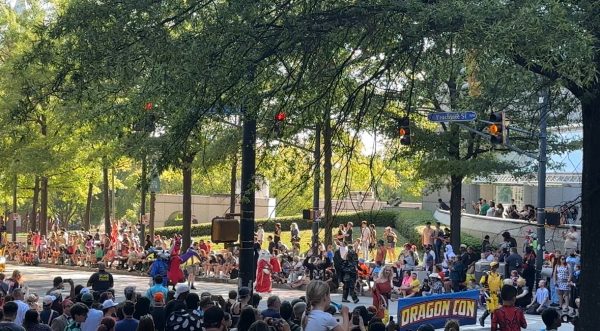Yearbook Adjusts to Online Schooling
In a normal school year, students working on the yearbook would work on sections determined at a meeting run by the program’s editors. After attending and taking pictures at relevant school events, they would eventually come together and combine their work into a 300-page product. But in a school year marked by COVID-19 and online learning, they’ve lost many of their usual opportunities to document important events. Faced with an unpredictable timetable and an increased reliance on technology, students have been forced to find new ways of gathering information for the yearbook.
Initially, Yearbook struggled to obtain photographs of students. Because of the need for socially distanced events, there was no picture day for underclassmen. Yearbook initially contemplated the idea of creating the book specifically for Juniors and Seniors, but eventually decided to accept student-submitted photographs for use in the yearbook, allowing all students to have their pictures in the book.
“Photographs are really hard to get in the time of COVID-19. Instead of sending photographers out to events, because there’s no events or there’s limited capacity at an event, like a sporting event, we’re relying on the masses for photographs,” said Amanda Lockhart, the teacher responsible for managing the yearbook.
Yearbook had previously relied heavily on pictures taken by those in the program, but their inability to attend many events forced them to take advantage of student-submitted photos and information. The resulting student input has led to a more student-oriented focus than previous yearbooks might have had, with topics such as social media and student-led social justice movements receiving more coverage.
“Obviously, a lot of the school events that we would typically highlight are not able to be recognized this year because of COVID-19, so we’ve sort of switched up and done a lot of student life spread ideas,” said Lydia Hamby, one of the yearbook’s editors.
The shift to an online school system has also changed the way the yearbook is being assembled. Students would typically use Adobe InDesign to create the unique layouts and spreads that make up the yearbook, but editors have instead chosen to use Layout Pro for its ease of use.
“There are some limitations design-wise. We have employed a bit more use of templates, where typically we’ve tried to make all spreads uniquely different,” Lockhart said.
Though there have been many small changes over the course of the year, the fundamentals of the yearbook’s creation have largely remained consistent.
“The process at first seemed like it would change significantly just because we were on a Google Meets platform, but in terms of assignments and grouping students together to get their spreads completed, I would say that’s been relatively the same,” said Hamby.







